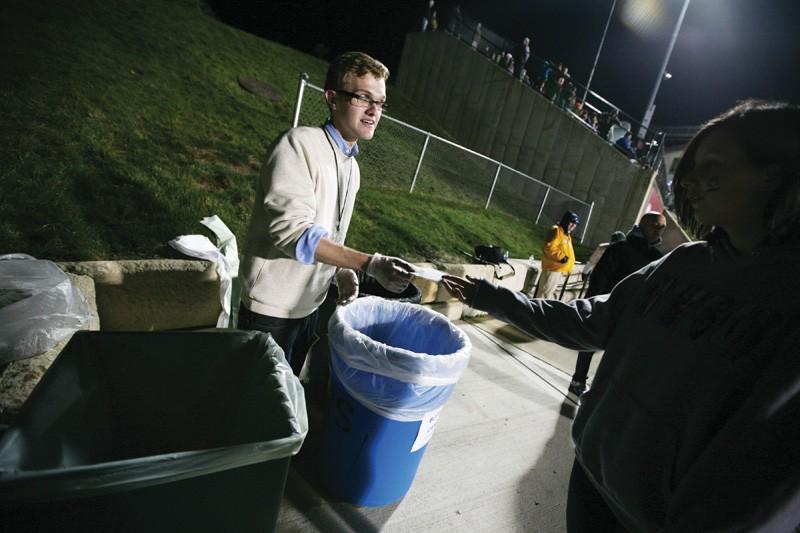GVSU ranks No. 1 for zero waste football game

GVL / Archive Junior GVSU student, John Gezon, assisting in the Zero Waste program during the football game.
Jan 6, 2013
Grand Valley State University ranked No. 1 in the top five Division II and III schools in organic reduction during the Zero Waste Football Game in 2012, with .143 pounds of waste reduced per person. GVSU also ranked sixth in the overall combined rankings of colleges in the country that participated in the event.
“Weeks of planning paid off with great results at our Homecoming Football Game (on) Saturday, October 20, 2012,” said Steven Leeser of Facilities Services at GVSU. The game against Northwood University was part of the Sustainable Community Development Initiative’s October Spotlight, featuring the College of Liberal Arts and Sciences.
“Over 70 volunteers manned nearly 30 recycle stations from 5 p.m. (tailgater time) to the end of the football game. Even the Laker Marching Band participated by forming the universal recycling symbol on the field at halftime,” Leeser said.
Students from the Honors College and the Student Environmental Coalition teamed up with individuals from Campus Dining, the Women’s Center, Meijer Holland Campus and the Office of Student Life to help out, educating the fans about composting and recycling. By midnight, 1,648 pounds of landfill waste, 862 pounds of recyclables, and 1,726 pounds of compostables had been collected for a total of 2,588 pounds of material kept from landfills. This created a diversion rate of 61 percent by weight. Diversion rate is the percentage of waste materials diverted from traditional disposal such as landfilling or incineration to be recycled, composted or re-used.
GVSU’s participation in the Zero Waste Football Game initiative was due in large part to the Student Environmental Coalition’s awareness of the waste left behind after football games.
“There was no recycling available at previous football games, which resulted in hundreds of pounds of recyclable and compostable materials being thrown out,” said SEC officer Josh Lycka. “We wanted to see how much of this waste we could recuperate, as well as provide facilities for others to take initiative and recycle.”
The top five of the participating colleges in the overall ratings were the University of Nevada-Las Vegas with .43 reduction, Harvard University with .218 reduction, the University of California Berkeley with .187 reduction, the University of California-Davis with .156 reduction, and the Ohio State University main campus with .147 reduction.























